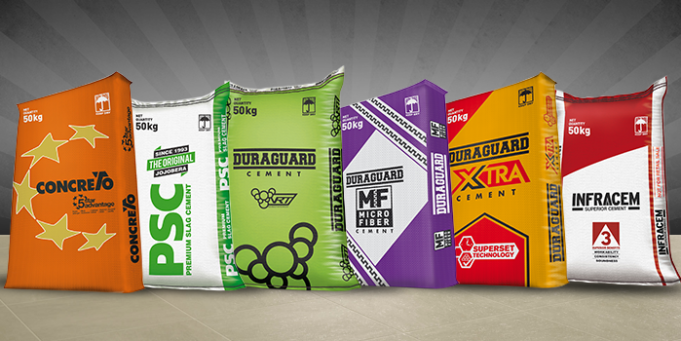“New Technology in RMC – Structural Lightweight Concrete”
 One of the most defining aspects of modern society is our ability to create the things we require, be it food, shelter, or clothing, and being an integral part of construction, concrete is arguably one of the most essential parts of development today. In fact, India is currently the second largest producer of cement in the world, one of the chief ingredients of concrete. Initiatives like the development of 98 smart cities in the country, along with the dependence of several industries on concrete, including housing and real estate, has provided a huge boost to the sector. This, in turn, has opened up avenues for the development and use of several different types of specialized concrete, such as Structural Lightweight Concrete, one of the latest technologies in the Ready-Mix-Concrete (RMC) and construction industry.
One of the most defining aspects of modern society is our ability to create the things we require, be it food, shelter, or clothing, and being an integral part of construction, concrete is arguably one of the most essential parts of development today. In fact, India is currently the second largest producer of cement in the world, one of the chief ingredients of concrete. Initiatives like the development of 98 smart cities in the country, along with the dependence of several industries on concrete, including housing and real estate, has provided a huge boost to the sector. This, in turn, has opened up avenues for the development and use of several different types of specialized concrete, such as Structural Lightweight Concrete, one of the latest technologies in the Ready-Mix-Concrete (RMC) and construction industry.
The primary reason for the rising popularity of Structural Lightweight Concrete over regular concrete in the construction sector is the fact that it has strengths comparable to regular concrete, and yet, is typically 25% to 50% lighter, like aluminium to steel in automotive industry. It has a density ranging from 1000 – 1800 Kg/m3 and strength ranging from 10 – 40 Mpa. The American Concrete Institute (ACI) states that structural lightweight aggregate concretes possess a 28-day compressive strength of roughly 17 Mpa and above, while weighing not more than 1850 Kg/m3. Structural Lightweight Concrete is made with processed aggregates such as expanded or sintered clays, shale, slates, fly ash, and slag or with naturally occurring light weight rocks like pumice and scoria.
The low concrete density is achieved by using low-density aggregates and a specific concrete mix design, which helps it offer significantly higher building design flexibility than regular concrete, along with increased over all cost savings. The main advantages of Structural Light Weight Concrete Structure can be noted as follows:
- Lower Dead Load
- Improved Seismic Structural Response
- Longer Span
- Improved Fire Ratings and Fire Endurance
- Improved Thermal & Acoustic Resistance
As a result, Structural Lightweight Concrete can be used extensively in top floors of high rise construction, long span bridges, steel structures, marine structures, screeds among others. In fact, owing to its low density, durability, longevity, and freeze and thaw resistance, it was even used in the construction of ships during World War I and II. This was because lightweight reinforced concrete ships had a considerably longer life expectancy and lower maintenance costs, compared to ones made using steel.
 The 50% load reduction of Structural Light Weight Concrete from Normal Concrete came as blessing to one of our clients in Surat, where Nuvoco developed and supplied 1200Kg/m3 Density M15 Grade Stuctural Light Weight Concrete for the construction of precast structural elements for toilet blocks which needs to be shifted to Mumbai 300 KM away by road. The specialized engineered product offered easy handling on table tilting type precast formwork, coupled with high early strength for early deshuttering helped improved factory output by 30%. The self-curing property also helped lower water requirement for the curing process. The overall reduction in precast element weight considerably reduced trucking and placement costs as well.
The 50% load reduction of Structural Light Weight Concrete from Normal Concrete came as blessing to one of our clients in Surat, where Nuvoco developed and supplied 1200Kg/m3 Density M15 Grade Stuctural Light Weight Concrete for the construction of precast structural elements for toilet blocks which needs to be shifted to Mumbai 300 KM away by road. The specialized engineered product offered easy handling on table tilting type precast formwork, coupled with high early strength for early deshuttering helped improved factory output by 30%. The self-curing property also helped lower water requirement for the curing process. The overall reduction in precast element weight considerably reduced trucking and placement costs as well.
 In many cases due to building height regulations in Indian Metros the approvals for higher floors are often delayed or given after building completion. Adding a few floors above the existing structures comes with enormous commercial benefit and a lot of technical challenges, primarily the capability of the load bearing members of the existing structures to sustain the extra load from the additional floors are a big question usually. Structural Light Weight Concrete’s highly efficient strength to weight ratio, ideal tensile and elastic properties makes it excellent for this type of alteration, repair, or expansion of existing structures for adding extra stories, without needing to modify the foundation, be it concrete or steel frame structures.
In many cases due to building height regulations in Indian Metros the approvals for higher floors are often delayed or given after building completion. Adding a few floors above the existing structures comes with enormous commercial benefit and a lot of technical challenges, primarily the capability of the load bearing members of the existing structures to sustain the extra load from the additional floors are a big question usually. Structural Light Weight Concrete’s highly efficient strength to weight ratio, ideal tensile and elastic properties makes it excellent for this type of alteration, repair, or expansion of existing structures for adding extra stories, without needing to modify the foundation, be it concrete or steel frame structures.
 The property that the lower density of the concrete reduces the overall dead load of structures, was recetly exploited by one of client to make ones of its kind glass bottom hanging swimming pool. The enormous steel girders supported the swimming pool between two 13th storied residential towers and using normal concrete for pool deck was out of question. Nuvoco worked closely with client and developed a concrete solution with 35% lesser load and same mechanical properties to normal concrete. The structural light weight concrete with density 1600Kg/m3 and strength of 25 Mpa was highly beneficial here and also forms a weathering course. The same benefit of load reduction with no compromise in mechanical properties is ideal for the construction of steel deck slabs with Structural Light Weight Concrete. The higher acoustic resistance of this concrete is also ideal for hotel rooms or hotel construction.
The property that the lower density of the concrete reduces the overall dead load of structures, was recetly exploited by one of client to make ones of its kind glass bottom hanging swimming pool. The enormous steel girders supported the swimming pool between two 13th storied residential towers and using normal concrete for pool deck was out of question. Nuvoco worked closely with client and developed a concrete solution with 35% lesser load and same mechanical properties to normal concrete. The structural light weight concrete with density 1600Kg/m3 and strength of 25 Mpa was highly beneficial here and also forms a weathering course. The same benefit of load reduction with no compromise in mechanical properties is ideal for the construction of steel deck slabs with Structural Light Weight Concrete. The higher acoustic resistance of this concrete is also ideal for hotel rooms or hotel construction.
 Structural Lightweight Concrete also possesses considerably higher fire resistance compared to conventional concretes because of its lower thermal conductivity, lower coefficient of thermal expansion, and the inherent fire stability of aggregates, as they are already burned to over 1000 °C. Buildings constructed using Structural Lightweight Concrete possess higher resistance to exposure to the natural elements than regular concrete, since the lower conductivity lengthens the time required for exposed members to reach a steady state temperature, preventing the interior temperature from changing under transient conditions. Additionally, because of the time lag involved, the solar build-up is sufficiently moderated, along with promoting nightly cooling effects. This property of Structural Lightweight Concrete was advised by Nuvoco to Wipro Hinjewadi in Pune and the idea of load bearing and weathering course screed was born. The screed course used over a waterproofing membrane was 30% lighter than the conventional brick batcoba method. With a density of 1800Kg/m3 and strength of 15 Mpa, it was perfect for the erection of the roof antenna resulting in better space utilisation. The higher thermal efficiency will ensure lower air-conditioning required in top floor. The engineered concrete also helped ensure a crack-free surface because of the concrete’s low shrinkage property and made pumping extremely easy, contrary to the usual difficulty that one faces, in the pumping of Structural Lightweight Concrete. The lower coefficient of thermal expansion for exposed lightweight even helps bring about a reduction in volume changes and the stresses associated with them, which makes Structural Lightweight Concrete ideal in the construction of top floors of tall structures and screeds.
Structural Lightweight Concrete also possesses considerably higher fire resistance compared to conventional concretes because of its lower thermal conductivity, lower coefficient of thermal expansion, and the inherent fire stability of aggregates, as they are already burned to over 1000 °C. Buildings constructed using Structural Lightweight Concrete possess higher resistance to exposure to the natural elements than regular concrete, since the lower conductivity lengthens the time required for exposed members to reach a steady state temperature, preventing the interior temperature from changing under transient conditions. Additionally, because of the time lag involved, the solar build-up is sufficiently moderated, along with promoting nightly cooling effects. This property of Structural Lightweight Concrete was advised by Nuvoco to Wipro Hinjewadi in Pune and the idea of load bearing and weathering course screed was born. The screed course used over a waterproofing membrane was 30% lighter than the conventional brick batcoba method. With a density of 1800Kg/m3 and strength of 15 Mpa, it was perfect for the erection of the roof antenna resulting in better space utilisation. The higher thermal efficiency will ensure lower air-conditioning required in top floor. The engineered concrete also helped ensure a crack-free surface because of the concrete’s low shrinkage property and made pumping extremely easy, contrary to the usual difficulty that one faces, in the pumping of Structural Lightweight Concrete. The lower coefficient of thermal expansion for exposed lightweight even helps bring about a reduction in volume changes and the stresses associated with them, which makes Structural Lightweight Concrete ideal in the construction of top floors of tall structures and screeds.
Furthermore, the excellent durability performance of structural lightweight concrete made with expanded shale, clay, or slate is a result of the ceramic nature of the aggregate, along with its exceptional bond and elastic compatibility with the cementations matrix. The cellular structure of structural lightweight aggregates even facilitates internal curing through water entrainment, which is especially beneficial for high-performance concrete (HPC) as internal curing improves the contact zone, which helps mitigate microcracking. Structural Lightweight Concrete also offers reduced autogenous shrinkage, excellent freezing and thawing durability, improved contact zone between aggregate and cement matrix, less micro-cracking as a result of better elastic compatibility, high blast resistance, and better shock and sound absorption.
Pranav Desai: Head CDIC and Product Development
Amith Kalathingal: Product Development Manager CDIC











